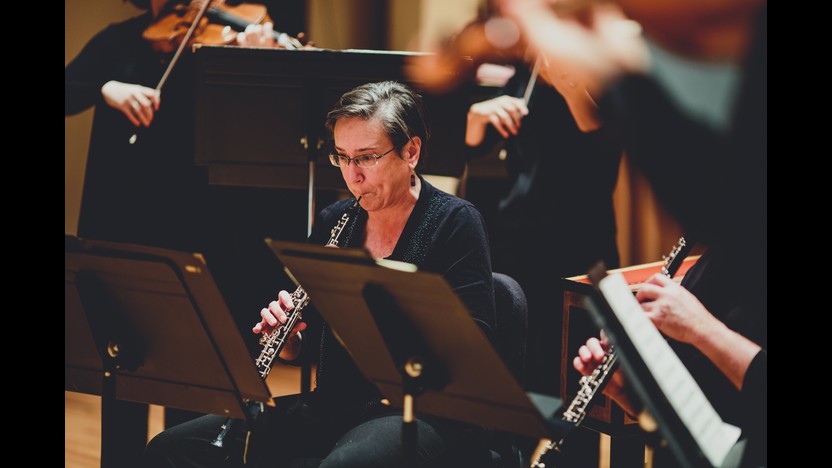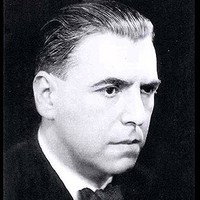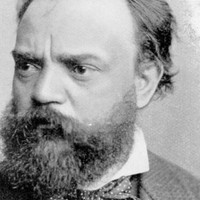Dvořák’s Serenade for Winds


Leo Smit was born into an affluent and cultured Jewish family in Amsterdam. He received piano lessons from a young age, and he also formed a bond with his younger sister’s harp teacher, Rosa Spier, a world-class harpist who would later introduce some of Smit’s most beloved compositions. He left Amsterdam in 1927 for Paris, where he soaked up the sounds of Stravinsky, Ravel, and the younger composers known collectively as “Les Six” (especially Milhaud and Honneger). Under those influences, Smit developed his own take on neoclassical style, one rooted in French practice but also informed by American jazz and the new German trends of Hindemith and company.
After nine years in Paris and one year in Brussels, Smit returned to his native Amsterdam to compose and teach in 1937. Nazi Germany occupied Holland in 1940, and the perils gradually increased for Smit and other Jews in Amsterdam (including the family of Anne Frank, whose diary captured those years of terror). First he lost the right to perform and teach in 1941; then he and his wife were forced to move into a Jewish ghetto in 1942. He still kept up his composing into the early month of 1943, until that April, when he and his wife were sent to Poland and killed days later at the Sobibor death camp.
Smit’s Sextet for Piano and Winds dates from 1933, during his happy sojourn in Paris. The tradition of chamber music for piano and winds stretched back to Mozart and Beethoven—each wrote a quintet, leaving out the flute—but there was a more recent tradition in France of works for piano and wind quintet, including the watershed Sextet drafted in 1932 by “Les Six” composer Poulenc. Smit’s Sextet develops a bright and sassy neoclassical language in the fast outer movements, surrounding a lyrical and contemplative slow movement.
Aaron Grad ©2016

The Jewish-Czech composer and pianist Erwin Schulhoff was a prodigy who gave his first concert tour of Germany at the age of sixteen. After four years of forced military service for Austria during World War I, Schulhoff emerged with strong leftist politics and musical interests ranging from Schoenberg’s atonality to American jazz. His career options in Berlin shriveled as the economic collapse and anti-Semitic tide brought the Nazi party to power, and he was no better off after he returned to Prague, where he was eventually arrested and transferred to a concentration camp in 1941. He died there eight months later, while still attempting to finish his Eighth Symphony.
Schulhoff’s Concertino for Flute, Viola and Double Bass was inspired by a 1924 visit to a Slavic folk festival, where “farmers’ sons and daughters sang and danced incessantly a thousand years of tradition.” He composed the work in a span of four days in 1925, and he introduced it the following year at the Donaueschingen Festival, with fellow composer Paul Hindemith playing viola. Schulhoff cited “Russian-orthodox litany” as the source of the eight-beat accompaniment figures in the opening movement, while the subsequent Furiant plays on the customs of a widespread Czech folkdance. The slow movement takes its cues from a “Carpathian love song,” and the finale introduces “a Slovakian shepherd’s flute theme.”
Aaron Grad ©2016
 Watch Video
Watch Video
Czech composer Antonín Dvořák’s Serenade for Winds has remained popular since its 1878 premiere, which was conducted by the composer himself in Prague. Dvořák dedicated the piece to Louis Ehlert, a music critic whose praise for Dvořák’s earlier works had made the composer famous throughout Germany. Like many of Dvořák’s compositions, the Serenade blends sonic elements of classical music with Eastern European folk traditions.
The Serenade opens with a movement that hearkens back to the soundscapes of long-ago court performances from the Rococo period; the sounds of the aristocracy are merged with a song of the common people. This opening theme is particularly important, because it will return near the end of the final movement, thereby making the Serenade a cyclical work. The second movement begins with a wistful, charming minuet. This is followed by a lively trio with syncopated Czech dance rhythms.
Long, sensuous melodies in the slower third movement convey a sense of melancholic nostalgia. The expressive oboe and clarinet are accompanied by subtle syncopation in the horn section and an active bass line. The Serenade ends with a driving, witty Finale reminiscent of the village band. High-level performance on wind instruments was a centuries-long Bohemian tradition, and Dvořák’s Serenade pays tribute to that rich heritage.
The year after the Serenade’s premiere, Johannes Brahms sent a letter to Joseph Joachim praising the work. Brahms wrote: “A more lovely, refreshing impression of real, rich and charming creative talent you can’t easily have…I think it must be a pleasure for the wind players!”
Paula Maust ©2022
Get driving directions and find nearby parking.
Find dining options close to the venue.
View seating charts to find out where you'll be seating.
Get driving directions and find nearby parking.
Find dining options close to the venue.
View seating charts to find out where you'll be seating.
